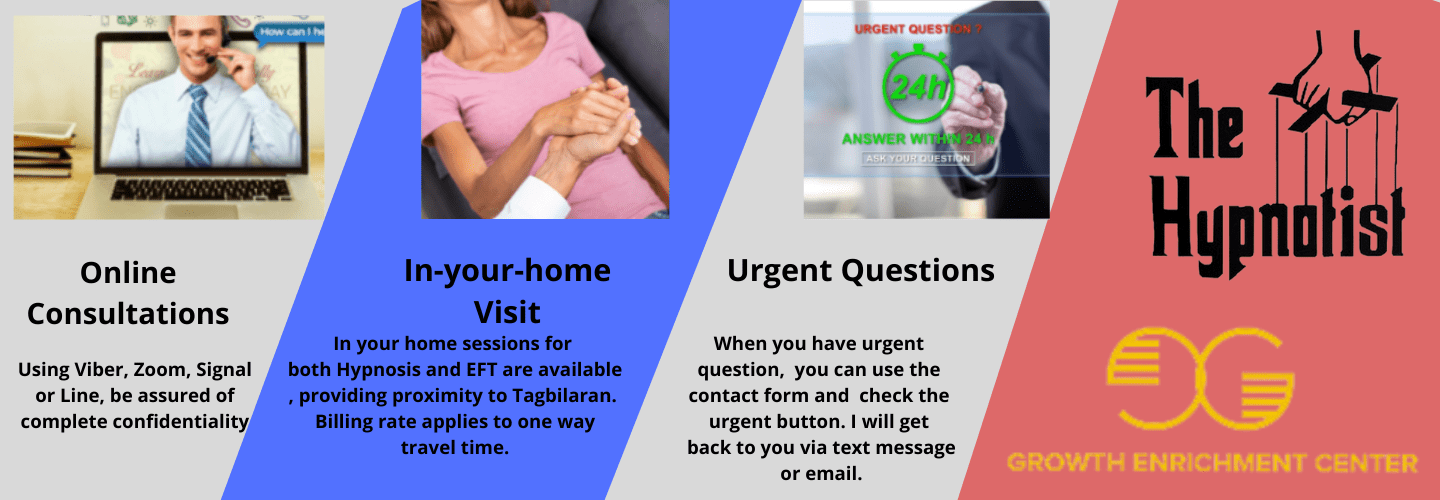
Harness the power of hypnosis, EFT, and NLP to ease bedtime fears and phobias. Hypnosis relaxes the mind, EFT releases emotional blockages, and NLP reframes negative thoughts. These techniques offer holistic relief for peaceful nights.
Understanding Bedtime Fear
What causes individuals to experience fear specifically when it comes to bedtime? Bedtime fear can stem from a variety of factors, including disrupted bedtime rituals and an uncomfortable sleep environment. When bedtime rituals are inconsistent or lacking, individuals may feel a sense of unease and find it difficult to relax before sleep. Similarly, an unfavorable sleep environment, such as excessive noise, uncomfortable bedding, or inadequate lighting, can contribute to feelings of fear and anxiety when it's time to go to bed.
Understanding these triggers is vital in addressing bedtime fear effectively. By establishing a calming bedtime routine that includes activities like reading, meditating, or taking a warm bath, individuals can signal to their bodies that it's time to unwind and prepare for sleep. Creating a sleep environment that is conducive to relaxation and rest, with elements like comfortable bedding, soothing colors, and minimal distractions, can also help alleviate bedtime fear.
Exploring Hypnosis for Anxiety

For those struggling with anxiety around bedtime, exploring hypnosis as a tool for anxiety relief can offer a unique approach to addressing these fears.
Hypnotherapy has shown promising benefits in helping individuals manage and reduce anxiety symptoms, providing a potential avenue for improving sleep quality and overall well-being.
Anxiety Relief Through Hypnosis
Exploring the potential benefits of hypnosis for alleviating anxiety can provide individuals with a unique and effective approach towards managing their emotional well-being. Through relaxation techniques and subconscious reprogramming, hypnosis aims to address the root causes of anxiety, offering a holistic way to find relief.
Hypnotherapy sessions can assist individuals in achieving a state of deep relaxation, allowing the subconscious mind to be accessed and reprogrammed to replace negative thought patterns with positive beliefs. By tapping into the power of the subconscious, hypnosis can help individuals better understand their anxiety triggers and develop coping mechanisms to navigate challenging situations with a sense of calm and control.
This approach offers a promising avenue for those seeking natural and sustainable anxiety relief.
Benefits of Hypnotherapy
Amidst the array of therapeutic options available for managing anxiety, hypnotherapy emerges as a compelling avenue for individuals seeking holistic relief through subconscious reprogramming and relaxation techniques.
Hypnotherapy harnesses the power of the mind-body connection, allowing individuals to tap into their subconscious and address anxiety at its root. By inducing a state of deep relaxation, hypnotherapy enables clients to access their inner resources, fostering a sense of calm and control over anxious thoughts and feelings.
Through guided imagery and positive suggestion, hypnotherapy can reframe negative thought patterns, instilling a newfound sense of confidence and tranquility.
Embracing the benefits of hypnotherapy can lead to sustainable relief from anxiety, empowering individuals to navigate life with greater ease and resilience.
Applying EFT Techniques

Harnessing the power of Emotional Freedom Techniques (EFT) can provide individuals with effective tools to alleviate the fear of going to bed. EFT, also known as tapping therapy, involves gentle tapping on specific meridian points on the body while focusing on the fear or phobia at hand. This technique aims to create an emotional release, allowing individuals to address and process their fears in a safe and controlled manner.
When applied to the fear of going to bed, EFT can help individuals uncover the root causes of their anxiety surrounding bedtime. By tapping on acupressure points, individuals can release trapped emotions and negative thought patterns that contribute to their fear. This process enables them to reframe their perspective on bedtime, promoting relaxation and a sense of safety when going to bed.
Through the practice of EFT, individuals can develop a deeper understanding of their fears and work towards resolving them. By incorporating tapping therapy into their bedtime routine, individuals can cultivate a sense of calmness and peace, ultimately overcoming their fear of going to bed.
Leveraging NLP Strategies

Traversing the fear of going to bed can be a challenging journey, but utilizing NLP strategies can provide a powerful toolkit for overcoming bedtime anxiety.
By integrating NLP techniques into your bedtime routine, you can reframe negative thought patterns, foster relaxation, and create a more peaceful and restful sleep environment.
Let's delve into how these strategies can empower you to embrace bedtime with a sense of calm and confidence.
NLP Techniques for Bedtime
When it comes to improving your bedtime routine and overcoming the fear of going to bed, incorporating NLP techniques can be a valuable tool. NLP offers effective strategies to promote bedtime relaxation and alleviate sleep anxiety. Techniques such as anchoring positive feelings to the bedtime routine, reframing negative thoughts about sleep, and visualizing a restful night can be powerful in calming the mind and body before sleep.
Overcoming Bedtime Anxiety
In addressing bedtime anxiety, utilizing NLP strategies can provide effective tools for overcoming fear and promoting relaxation before sleep. NLP techniques can help reframe negative thought patterns and create a sense of calmness conducive to a restful night.
Here are four practical ways to leverage NLP strategies for overcoming bedtime anxiety:
- Anchoring: Create a positive mental anchor that you can trigger before bedtime to induce feelings of relaxation.
- Reframing: Identify and reframe negative thoughts about bedtime into positive affirmations that promote peace and comfort.
- Visualizations: Use guided visualizations to imagine a serene bedtime routine and a peaceful night's sleep.
- Anchoring to Bedtime Routines: Link positive emotions to your bedtime routines, reinforcing a sense of safety and relaxation.
Overcoming Sleep Phobias

Many individuals who struggle with sleep phobias find solace in gradually exposing themselves to their fears in a controlled and supportive manner. Sleep therapy can be a valuable tool in overcoming these phobias, offering techniques to address the root causes of the fear and reframe negative associations with bedtime. Bedtime relaxation rituals, such as deep breathing exercises, calming music, or gentle stretches, can help ease the shift into sleep and create a positive bedtime routine.
Understanding the specific triggers of the sleep phobia is essential in developing a personalized approach to overcoming it. Whether the fear is related to nightmares, insomnia, or a specific sleep-related trauma, working with a therapist experienced in sleep disorders can provide valuable support and guidance. Cognitive-behavioral therapy (CBT) techniques can also be effective in challenging and changing negative thought patterns associated with sleep.
It's important for individuals struggling with sleep phobias to practice self-compassion and patience as they work towards overcoming their fears. By seeking professional help, utilizing relaxation techniques, and gradually confronting their fears in a supportive environment, individuals can reclaim a restful and peaceful relationship with bedtime.
Combining Hypnosis and EFT

To enhance the effectiveness of addressing sleep phobias, integrating hypnosis and Emotional Freedom Techniques (EFT) can offer a holistic approach towards overcoming fear associated with bedtime. When combining these two powerful therapeutic modalities, individuals can experience profound benefits that target both the conscious and subconscious levels of the mind.
- EFT benefits: EFT, also known as tapping, helps release emotional blockages and reduce anxiety by tapping on specific meridian points on the body, complementing the deep relaxation achieved through hypnosis.
- Hypnosis synergy: Hypnosis can enhance the effectiveness of EFT by creating a relaxed state of mind that is more receptive to suggestion, allowing for deeper emotional healing.
- Combining NLP, hypnosis for phobias: By incorporating Neuro-Linguistic Programming (NLP) techniques into hypnosis sessions, individuals can reframe negative thought patterns and associations with bedtime, further solidifying the effectiveness of the treatment.
- All-inclusive approach: The combination of hypnosis and EFT offers an all-encompassing approach that addresses both the conscious fears and subconscious beliefs that contribute to the fear of going to bed, promoting lasting change and improved sleep patterns.
NLP for Better Sleep Patterns

Utilizing Neuro-Linguistic Programming (NLP) techniques can greatly enhance one's sleep patterns by addressing underlying thought patterns and behaviors associated with bedtime. NLP offers a unique approach to improving relaxation and enhancing sleep quality through various methods such as reframing negative beliefs, anchoring positive emotions, and creating mental associations that promote calmness before sleep.
By incorporating NLP into your bedtime routine, you can reprogram your mind to let go of stress and anxiety that may be hindering peaceful sleep. Techniques like visualizations, self-talk adjustments, and sensory acuity can help in promoting a state of relaxation conducive to falling asleep easily and enjoying restful nights.
Moreover, NLP can assist in identifying and modifying unhelpful habits that disrupt sleep, allowing you to establish healthier patterns for bedtime. This approach empowers individuals to take control of their thoughts and behaviors surrounding sleep, leading to a more restorative and fulfilling nighttime routine.
Sustaining Positive Bedtime Habits

Developing and maintaining consistent positive bedtime habits is crucial for fostering a restful and rejuvenating sleep routine. Establishing routines and incorporating nighttime relaxation techniques can greatly enhance the quality of your sleep.
Here are four practical tips to help you sustain positive bedtime habits:
- Create a Relaxing Bedtime Routine: Engage in soothing activities such as reading a book, taking a warm bath, or practicing deep breathing exercises to signal to your body that it's time to unwind and prepare for sleep.
- Maintain a Consistent Sleep Schedule: Go to bed and wake up at the same time every day, even on weekends, to regulate your body's internal clock and promote better sleep patterns.
- Limit Screen Time Before Bed: Reduce exposure to screens such as phones, tablets, and computers at least an hour before bedtime to avoid disruptions to your natural sleep-wake cycle.
- Optimize Your Sleep Environment: Create a comfortable and peaceful bedroom by adjusting the lighting, temperature, and noise levels to create an ideal setting for restful sleep.
Frequently Asked Questions
Can Hypnosis, Eft, and NLP Be Effective in Treating Other Types of Fears and Phobias?
Anxiety management and phobia treatment can greatly benefit from hypnosis, EFT, and NLP techniques. These methods offer effective strategies to address various fears and phobias, providing individuals with tools to overcome and manage their anxieties successfully.
Are There Any Potential Side Effects or Risks Associated With Using Hypnosis, Eft, or NLP for Treating Bedtime Fears?
When considering the use of therapeutic techniques like hypnosis, EFT, or NLP for treating bedtime fears, potential risks may include temporary emotional discomfort or unintended memory recall. Precautions involve working with qualified professionals to maximize benefits and minimize drawbacks, ensuring effectiveness and success rates.
How Long Does It Typically Take to See Results When Using Hypnosis, Eft, and NLP for Overcoming the Fear of Going to Bed?
Progress timeline varies, typically seeing initial shifts in 3-6 sessions. Success stories highlight gradual but steady improvement. Contextual factors influence speed; commitment and openness quicken results. Patience and trust in the process are key.
Can These Techniques Be Used for Children Who Experience Bedtime Fears?
Child therapy can effectively address bedtime fears in children. Involving parents in the therapeutic process can enhance outcomes. It is essential to approach treatment with sensitivity and understanding to create a safe environment for children to overcome their fears.
Are There Any Specific Qualifications or Certifications to Look for When Seeking a Practitioner for Hypnosis, Eft, or NLP for Bedtime Fears?
When seeking a practitioner to address bedtime fears, look for certifications and qualifications specific to the techniques used. While some may hesitate due to varying levels of certification, prioritize experience, client testimonials, and ongoing education.
Conclusion
To sum up, fear of bedtime can be effectively addressed through hypnosis, EFT, and NLP techniques. By understanding the root causes of anxiety and applying these strategies, individuals can overcome their sleep phobias and establish positive bedtime habits.
It may seem ironic that something as simple as going to bed can elicit fear, but with the right tools and mindset, a restful night's sleep is within reach for anyone willing to take the necessary steps.
Take the Next Step
Do not be afraid to reach out to me, Mark E Wilkins, to assist you in any issues you might have. Most Hypnotherapy sessions last 2 hours and EFT Sessions are usually handled with one session. Life Coaching is 45 minute session, once a week. Self-Hypnosis is taught in one session, and lasts a lifetime.
To make an appointment, first listen to the Pre-talk and fill out he Complementary Healthcare Provider Disclosure. The use the Contact Form to request an appointment with the Bohol Hypnosis Expert.
Self-help downloads are available. The self-hypnosis program to teach you how to self-hypnotize is here.





